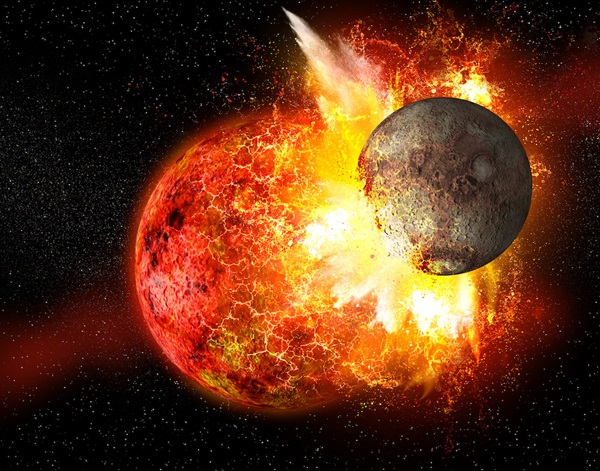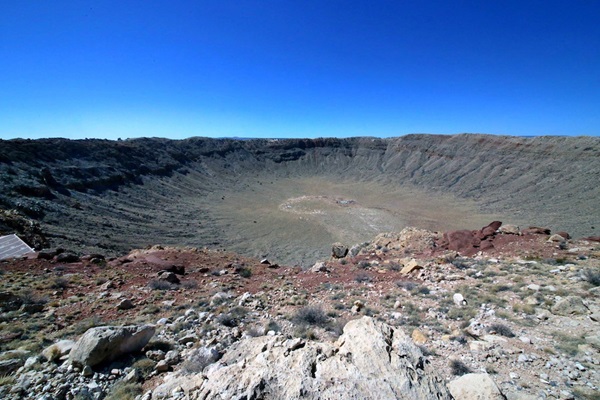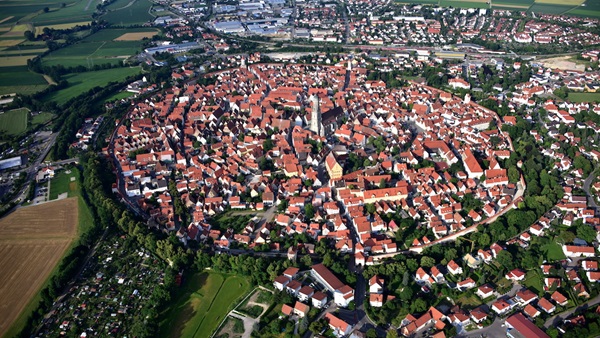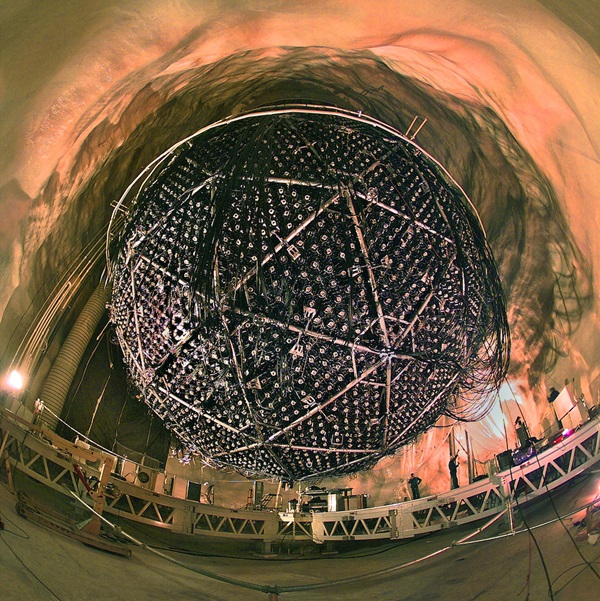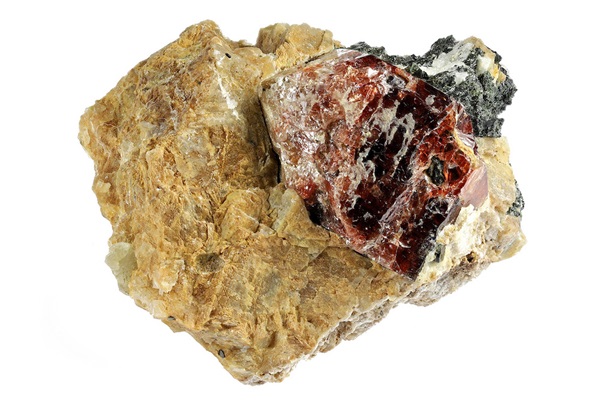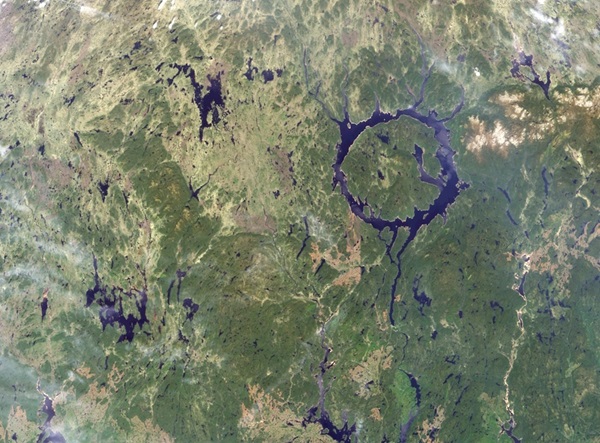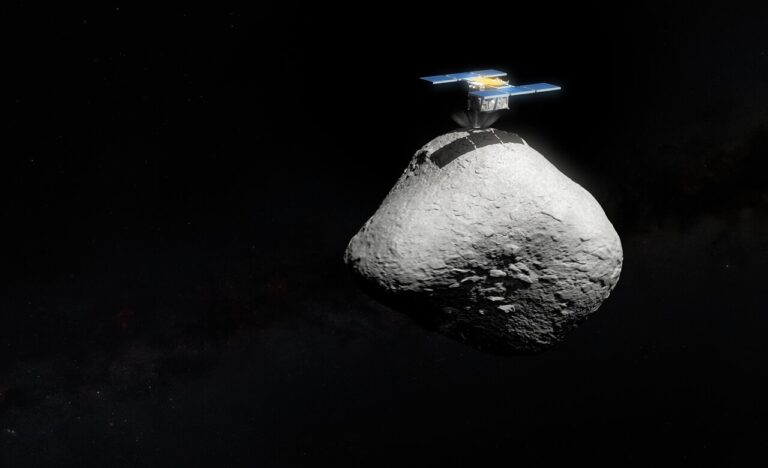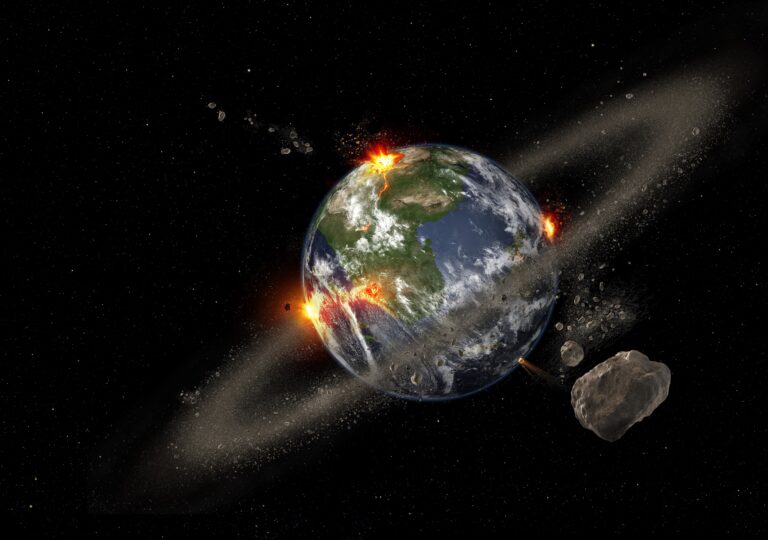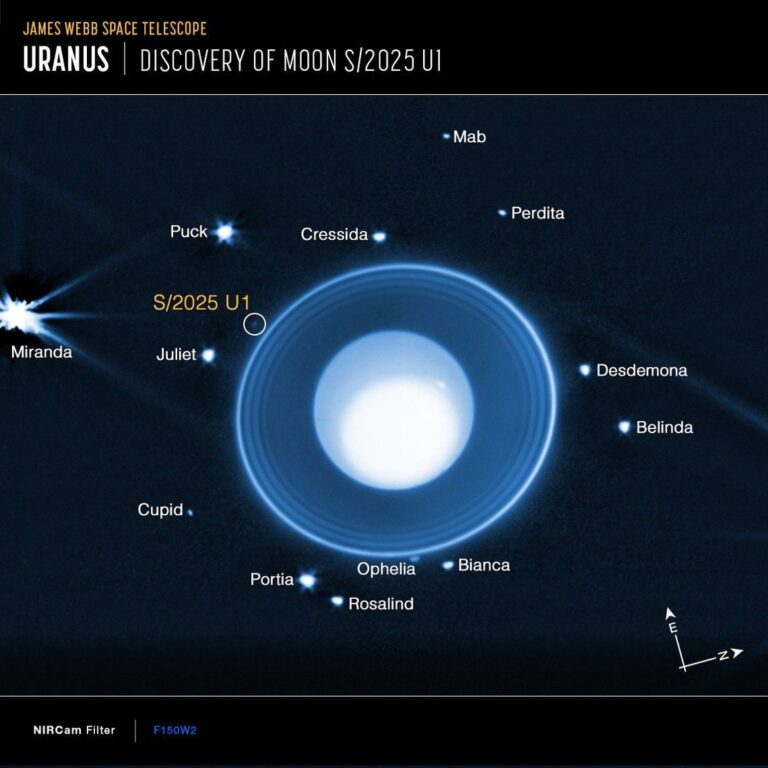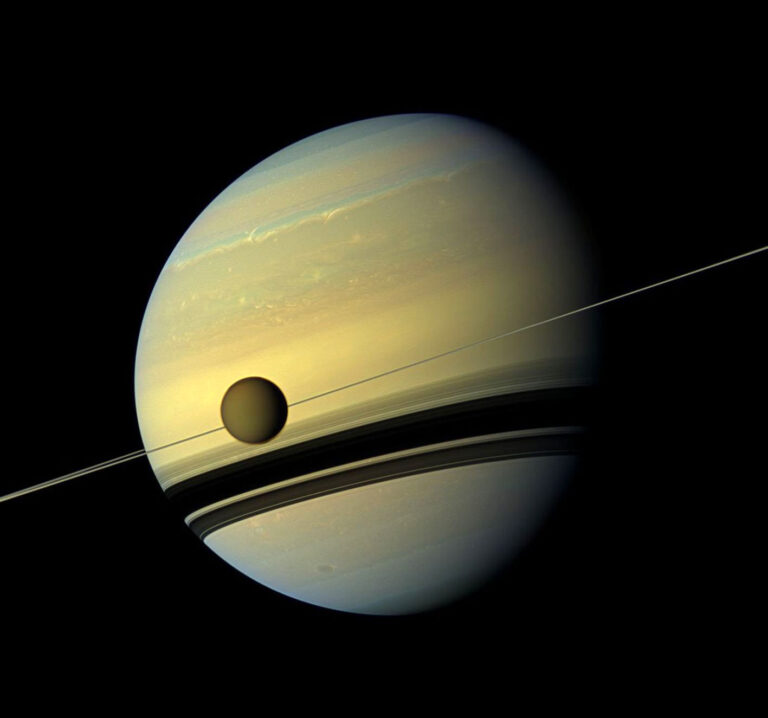Key Takeaways:
- The Giant Impact Hypothesis posits a Mars-sized planetesimal, Theia, collided with Earth approximately 4.5 billion years ago, resulting in the formation of the Moon from the ejected debris.
- Multiple terrestrial impact events are described, ranging in size and age, from the relatively small Meteor Crater in Arizona to significantly larger craters such as Chicxulub (Yucatán Peninsula), Sudbury (Ontario), and Manicouagan (Quebec), each leaving distinct geological and biological impacts.
- The impact at Sudbury, Ontario, created a large crater, leading to the discovery of valuable minerals and, notably, the location of the Sudbury Neutrino Observatory which contributed to the 2015 Nobel Prize in Physics through neutrino research.
- Zircon crystal analysis is used to precisely date impact events, and the dating of impacts contributes to understanding of their possible links to extinction events, geological formations, and climate shifts throughout Earth's history.
Long before humans came to inhabit the area, a massive space rock slammed into woodlands that are now the Arizona desert. Mammoths, giant sloths, and other Pleistocene animals may have glanced up as explosions tore through the sky — only to be vaporized an instant later.
Estimated to be about 160 feet (50 meters) wide and weighing as much as 330,000 tons (300 million kilograms), the incoming mass of iron ionized the atmosphere as it streaked toward Earth at some 27,000 mph (43,000 km/h). The meteorite hit with a force 150 times more powerful than the atomic bomb dropped on Hiroshima. Shock waves propagated through the ground and air alike, destroying everything for miles. In the blink of an eye, the impact excavated a hole 0.75 mile (1.2 kilometers) wide and 560 feet (170 m) deep.
Evidence of the collision’s true power can be seen in the uplifting of massive limestone blocks, shocked rock formations, and even microscopic diamonds formed by the intense pressure and heat of the strike. Ejected fragments from the largely vaporized meteorite have since been recovered miles away.
The strike that created Meteor Crater was surely dramatic and devastating. However, that impact pales in comparison to the long-term beating Earth has endured since its formation.
A rough start
The budding solar system was a chaotic and violent place. The Sun was forged from a massive, rotating nebula of gas and dust some 4.6 billion years ago. And about 4.5 billion years ago, when Earth was still in its infancy, a protoplanet roughly the size of Mars collided with our home world, nearly destroying it.
The rogue object, named Theia, was largely obliterated by the collision. Everything but its core was vaporized and spewed into space, along with most of Earth’s crust. Within 100 years or less, our planet was encircled by a ring of debris. Under the unyielding force of gravity, these leftovers began to clump together, ultimately forming the Moon.
This so-called Giant Impact Hypothesis explains a great deal about why Earth and the Moon share such similar compositions. And although Earth has since continued to be pummeled by asteroid-sized impactors, fortunately, none can compare to the sheer amount of destruction wrought by Theia.
Extinction factor
The small town of Chicxulub in Yucatán, Mexico, is very near the center of one of the largest impact craters on Earth. The town’s beautiful beaches belie the epic event that took place there some 66 million years ago.
Recent research suggests it was spring in the Northern Hemisphere when an asteroid or comet, moving at nearly 45,000 mph (72,500 km/h), impacted Earth near the coast of the Yucatán Peninsula. The object may have been as large as 8 miles (13 km) across. The strike released the power of a 100-million-megaton blast, carving out a crater more than 100 miles (160 km) wide and penetrating 12 miles (20 km) into Earth’s crust.
Earthquakes, volcanoes, and a monster tsunami that reached the center of North America were only some of the aftereffects of this powerful event. A long period of cooling also began as trillions of tons of dust and debris were blasted into the atmosphere, nearly bringing a stop to all photosynthesis.
Over time, weather and erosion eventually erased most of the visual evidence of this devastating impact, which wiped out an estimated 70 to 80 percent of all species on Earth, including the dinosaurs. Nonetheless, life slowly recovered. New and diverse forms of life ultimately reclaimed the planet.
Fortunately, an Earth-altering event like this only happens, on average, about every 100 million years.
Riches and neutrinos
In Sudbury, Ontario, lies one of the oldest and largest impact craters yet found on Earth. Scientists believe this crater formed when a giant space rock slammed into Earth some 1.8 billion years ago. The impactor was an estimated 6 to 10 miles (10 to 16 km) across and moving at about 45,000 mph (72,000 km/h). A cloud of debris enveloped our planet after the strike, and ejected rocks were thrown as far as current-day Minnesota.
This collision may have even opened a fissure in Earth’s crust, releasing magma. As the magma flowed upward, it carried large amounts of nickel, copper, gold, and platinum to the surface. Near the end of the 19th century, mines opened to claim these precious metals.
From 1999 to 2006, scientists carried out a search of their own in Creighton Mine, almost 7,000 feet (2,100 m) below Sudbury Crater. However, these scientists were not searching for metals to harvest, nor even for evidence of the ancient impact. Instead, shielded from cosmic radiation, the Sudbury Neutrino Observatory’s detectors quietly waited for solar neutrinos to pass through the ground and interact with a massive tank filled with heavy water. The Sudbury project, along with help from the Super-Kamiokande collaboration in Japan, proved that neutrinos change form as they leave the Sun — a process that requires them to have mass. This impact-enabled discovery ultimately won Takaaki Kajita of the University of Tokyo and Arthur McDonald of Queen’s University in Kingston, Canada, the 2015 Nobel Prize in Physics.
Cathedrals and cluster strikes
Those familiar with gems and minerals likely know of a beautiful emerald-green glass called moldavite, a type of tektite formed from terrestrial material ejected during an impact. Researchers now believe that moldavites, found mainly in the Bohemian region of the Czech Republic, are the byproduct of a specific massive meteorite that struck Germany some 15 million years ago.
Studies show that the roughly 0.6-mile-wide (1 km) asteroid plowed into Earth at an oblique angle. The impact ejected thousands of tons of material, which became fluid due to heat and shock. The ejecta rained down, creating a blanket of impact rubble over the newly formed crater, now known as Nördlinger Ries, or simply the Ries.
It is within this 15.5-mile-wide (25 km) impact crater that, more than a millennium ago, humans built the town of Nördlingen. Recent research has shown that St. George Cathedral (along with many other buildings in the town) was built using suevite, a mix of coarse-grained, fused rock. Suevite also contains glass, shocked crystals, and even diamonds. It is estimated that the cathedral alone has 5,000 carats of diamonds embedded in its walls, and the crater may hold as much as 72,000 tons of diamonds — most microscopic, but a few as big as 0.01 inch (0.3 millimeter) across.
Southwest of the town of Nördlingen, near the city of Limoges, France, lies the ancient Rochechouart Crater. This site was gouged out when a large asteroid hit Earth some 207 million years ago, around when the Triassic-Jurassic mass extinction occurred. (That extinction event is now understood to have been a slow, multi-million-year process that wiped out nearly 80 percent of all species; while the Rochechouart impact may have helped the extinction along, it was not the cause.)
Other craters seem to have formed near the same time — the Eye of Quebec, for example. An unusual circular feature officially named Manicouagan Reservoir, the “eye” is actually the eroded inner ring of a huge impact crater. An almost perfectly round ring lake surrounds René-Levasseur Island, at the center of which is Mount Babel, the uplifted peak that formed when Earth’s crust rebounded from the impact. With an outer diameter of 60 miles (100 km), this is one of the largest craters on Earth.
Zircon clock
One of the earliest minerals to form on Earth is zircon. In every crystal, there is a tiny amount of uranium, which slowly decays into lead at a well-established rate. However, when zircon is subjected to the heat and pressure of a massive cosmic impact, the rate of decay “resets,” starting the clock all over. This allows researchers to work backward and determine the timing of past impacts with great precision.
Because the date of the impact corresponds closely with the event that formed Rochechouart Crater, as well as others located in Ukraine, Manitoba, and North Dakota, some scientists initially suggested all these craters were formed by the same event, perhaps due to an impactor fragmenting before striking Earth in multiple locations. However, more recent research suggests Manicouagan Crater is some 214 million years old, making it 7 million years older than Rochechouart Crater.
Staying power
Most craters on Earth are slowly erased by erosion and plate tectonics. That’s certainly the case for the two oldest-known impact craters: Vredefort Crater in South Africa and Yarrabubba Crater in Western Australia. Nonetheless, there are still signs of them — some visible, and others detectable only by modern techniques.
From space, partial ring structures are obvious at the location where the Vredefort impactor smashed into the ground 2 billion years ago. These rings make up the Vredefort Dome, a 43-mile-wide (70 km) area of uplift where the ground rebounded after the hit. But the full crater, which has eroded away, was much larger, perhaps as large as 186 miles (300 km).
Nestled in Western Australia’s landscape of ancient rock is a 40-mile-wide (64 km) crater excavated a whopping 2.23 billion years ago, according to a recent study of the ratio of uranium to lead in ancient zircon crystals collected from the site. (Uranium decays into lead at a known rate.)
When the 4.3-mile-wide (7 km) Yarrabubba asteroid hit, Earth was just being released from the grips of a global ice age, so the Yarrabubba asteroid must have crashed into ice several miles thick. Computer simulations show that the impact released between 100 billion and 5.5 trillion tons of water vapor, which then spread throughout Earth’s atmosphere. That atmospheric water vapor could have sparked a greenhouse effect, warming Earth, speeding the great thaw, and ushering in a new era of life.
Impacts such as those highlighted here represent tremendous natural disasters, but they also often led to unexpected consequences. With nearly 8 billion people now living on our planet, the next cosmic strike could be a major turning point for the human race — good or bad. But nothing helps us prepare for the future like thoroughly understanding the past.

